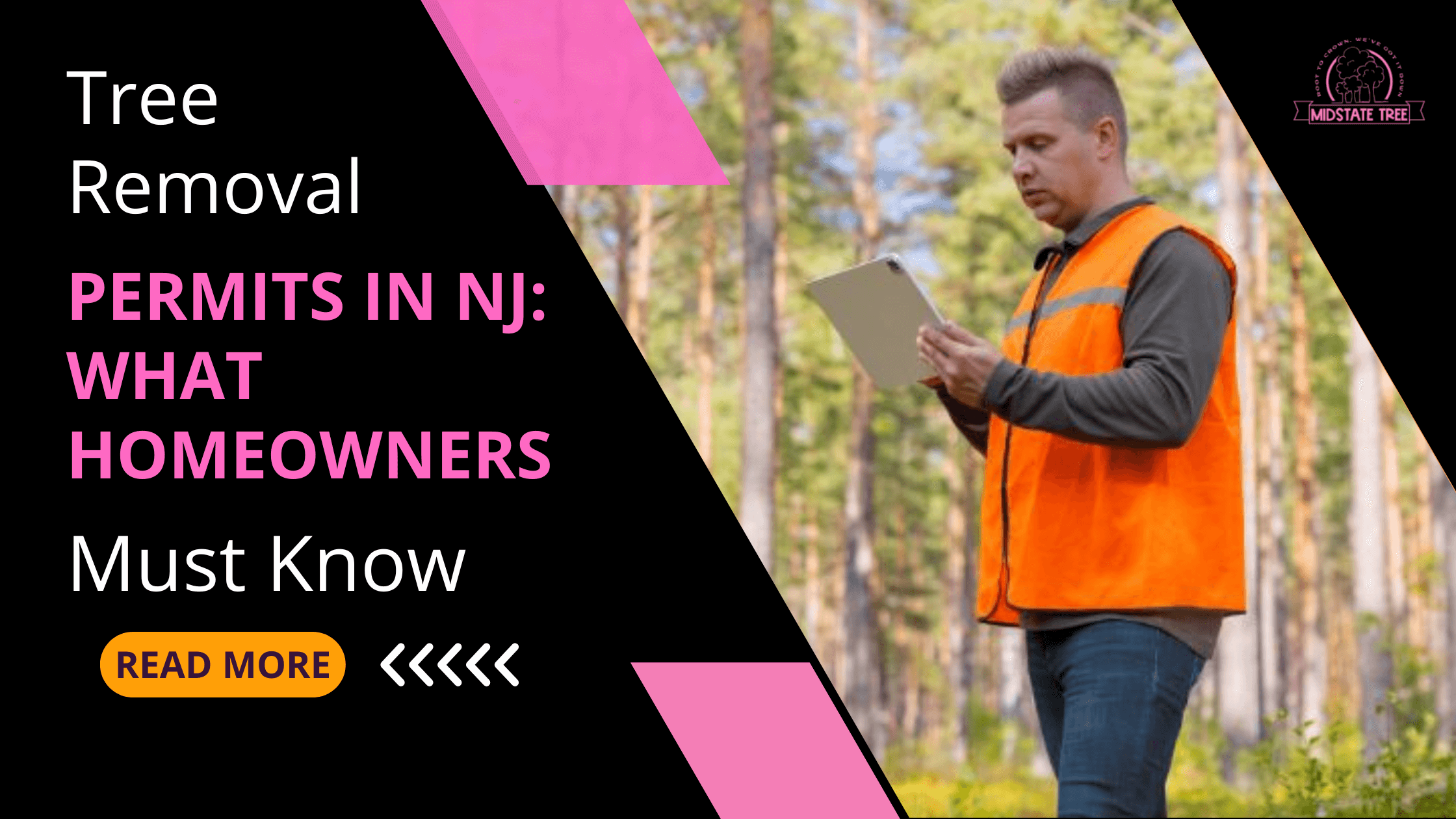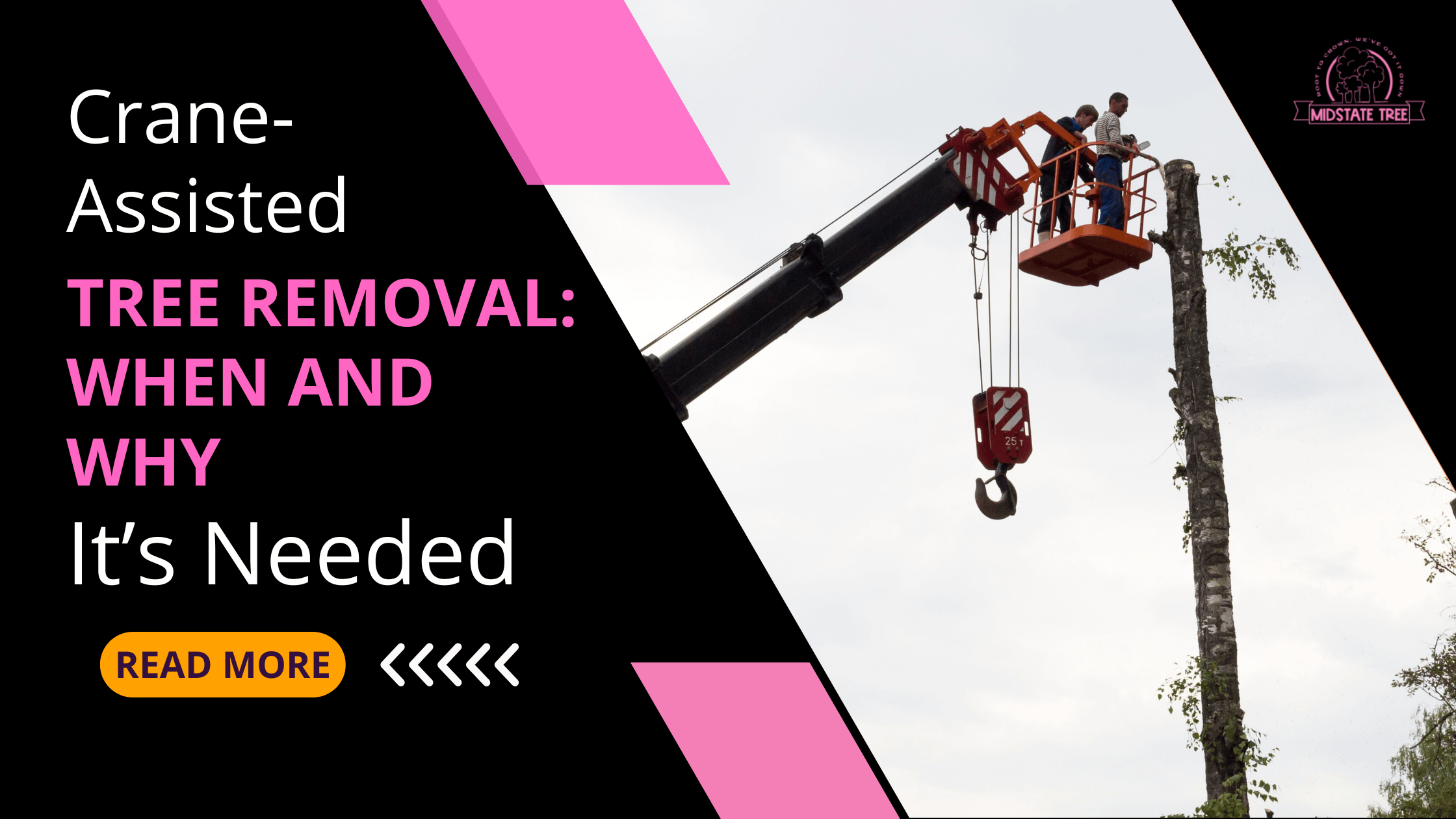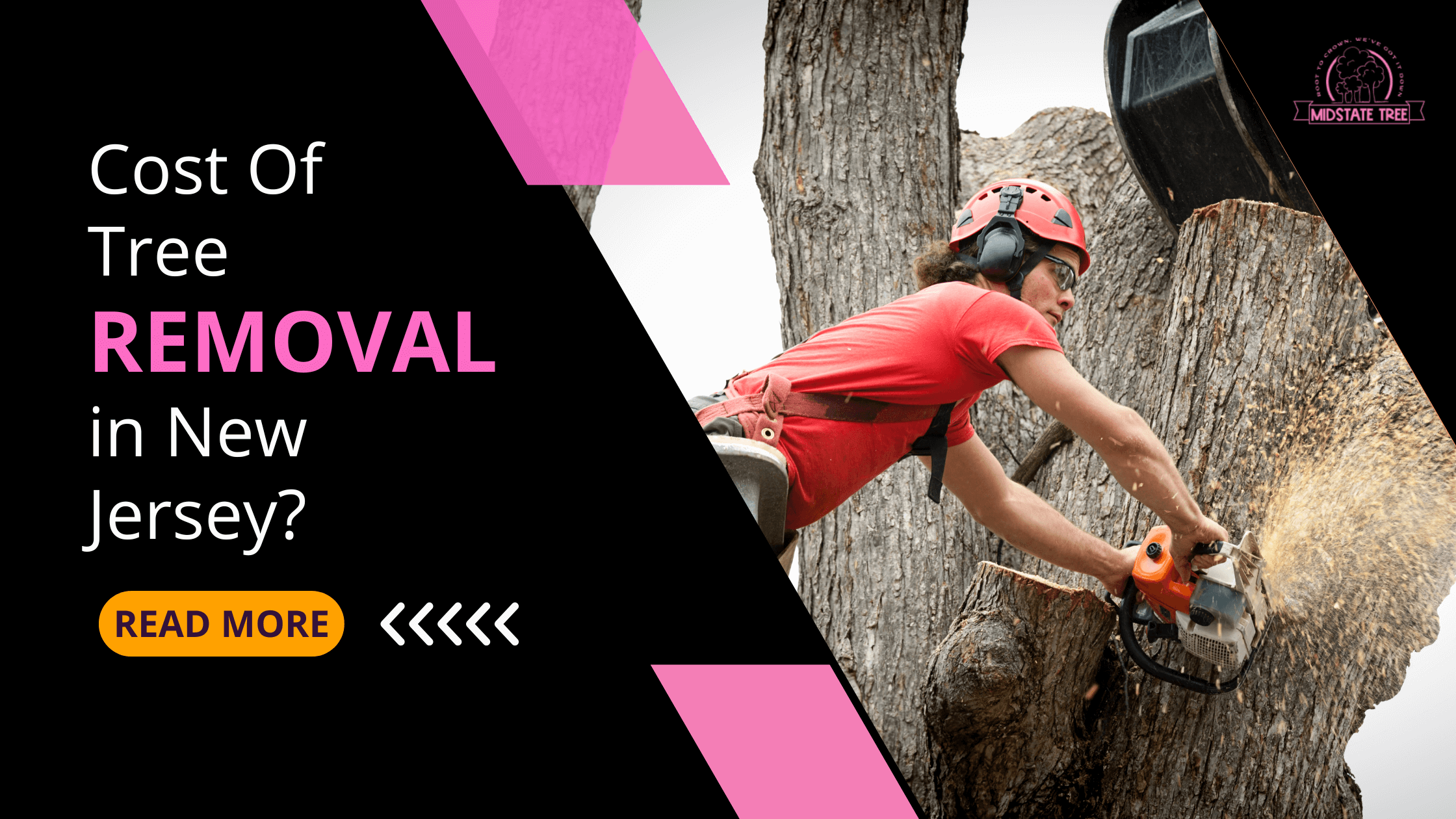Quick Answer:
Yes, in many towns across New Jersey, you need a permit to remove a tree—especially if it’s large, healthy, close to protected areas, or a regulated species.
Rules change from one town to the next, so always check your local ordinance or work with a licensed tree company before cutting anything down. Removing a tree without a permit could cost you thousands in fines or even legal trouble.
Taking down a tree on your property might seem like a personal choice, but in New Jersey, it often comes with legal strings attached. From local tree ordinances to statewide conservation rules, what you do in your own backyard might still need approval.
I’ve seen folks shocked by a fine or stop-work order they didn’t expect—all because they didn’t know a tree needed a permit.
If you live in Warren or Hunterdon County, the rules are especially important. Many towns now protect trees as part of their environmental laws. Knowing the rules before you fire up that chainsaw is key.
Do I Need a Permit to Remove a Tree in NJ?
If you’re thinking about cutting down a tree in your yard, here’s the truth: In many parts of New Jersey, you can’t just grab a chainsaw and go. You’ll likely need a permit—especially if the tree is healthy, big, or close to public areas.
Let’s break it down.
Why New Jersey Requires Tree Removal Permits
New Jersey towns take urban forestry seriously. Trees aren’t just yard decorations—they provide shade, fight erosion, absorb stormwater, and protect wildlife. That’s why towns pass tree protection ordinances to control when and how trees are removed.
A permit system allows municipalities to:
Prevent overcutting
Preserve mature or native species
Reduce flooding and soil erosion
Ensure fair property development
When You Almost Always Need a Permit
Most NJ municipalities base their rules on a few key factors:
1. Tree Health
If the tree is alive and healthy, many towns won’t allow removal without review—even if it’s on private property.
2. Tree Size (Diameter at Breast Height – DBH)
Towns often regulate trees based on trunk size. They use something called DBH—Diameter at Breast Height (measured 4.5 feet above ground). If your tree is:
- Over 8 inches DBH: Permit likely needed
- Over 16 inches DBH: Definitely regulated in many towns
For example:
- A 12-inch maple in Clinton Township? You’ll need approval.
- A 22-inch oak in Bridgewater? Definitely needs a permit and maybe a replanting requirement.
3. Tree Location
If the tree is:
- Near a public road
- Within a right-of-way
- In a floodplain or conservation area
- Located within a steep slope zone
…it’s likely regulated. These areas are considered sensitive zones, and trees here are often protected under zoning codes or stormwater management ordinances.
4. Type of Tree
Some trees—especially native or heritage species—are protected regardless of size or condition. These might include:
- White Oak (Quercus alba)
- Sugar Maple (Acer saccharum)
- Beech and Black Gum
Check with your town’s list of regulated species or protected trees. In Princeton and Montclair, for example, heritage trees can’t be touched without special review.
5. Number of Trees Being Removed
Even if each tree is small, removing multiple trees at once can trigger permitting. Many towns limit how many trees you can cut down per year.
For example:
- Removing 1 diseased pine? Likely fine.
- Cutting 6 trees for a pool install? Expect inspections, fees, and possibly a tree replacement plan.
When You Might NOT Need a Permit
There are a few situations where towns typically allow removal without a permit:
- Dead or dying trees (though proof may be required)
- Trees causing immediate danger (like leaning over your roof)
- Invasive species (some towns allow removal of things like Tree of Heaven)
- Emergency removals after a storm (must notify township afterward)
Still, don’t assume—you might still need to document the condition with an arborist report or photos.
There are a few situations where towns typically allow removal without a permit:
- Dead or dying trees (though proof may be required)
- Trees causing immediate danger (like leaning over your roof)
- Invasive species (some towns allow removal of things like Tree of Heaven)
- Emergency removals after a storm (must notify township afterward)
Still, don’t assume—you might still need to document the condition with an arborist report or photos.
Proof You May Need
To qualify for exemption or faster approval, you may be asked to submit:
- A Certified Arborist Report
- Photographs showing the hazard or decay
- A site sketch showing the tree’s position
- Utility maps or plot plans (for public easement checks)
Pro Tip: “If in Doubt, Check It Out”
Towns like Bridgewater, Princeton, and Bernardsville are strict. Other towns may be more relaxed. But the safest move is always to call your local zoning or engineering office, or let a licensed tree expert like Midstate Tree handle it for you.
Permits don’t just protect trees—they also protect you from fines, neighbor complaints, or legal delays if you’re building or selling your home.
Example Scenarios:
- You want to cut down a healthy 18” cherry tree in Clinton Township.
Permit required due to size. - A dead ash tree is hanging over your fence in Washington, NJ.
Likely exempt, but get a photo and call Midstate Tree to confirm. - You’re clearing 5 trees for a driveway expansion in Bridgewater.
Permit required; may also need replanting.
Common Factors That Trigger Tree Removal Permit Requirements in NJ
In New Jersey, you can’t assume you’re free to cut down a tree just because it’s on your property. Most townships have their own tree ordinances, and they’re not just concerned with the tree’s location—they consider multiple factors before deciding whether a permit is required.
Below are the six most common triggers that could require you to apply for a tree removal permit in NJ. Understanding these will help you avoid steep fines, forced replanting, or delays in your landscaping or construction plans.
1. Tree Size (Diameter at Breast Height – DBH)
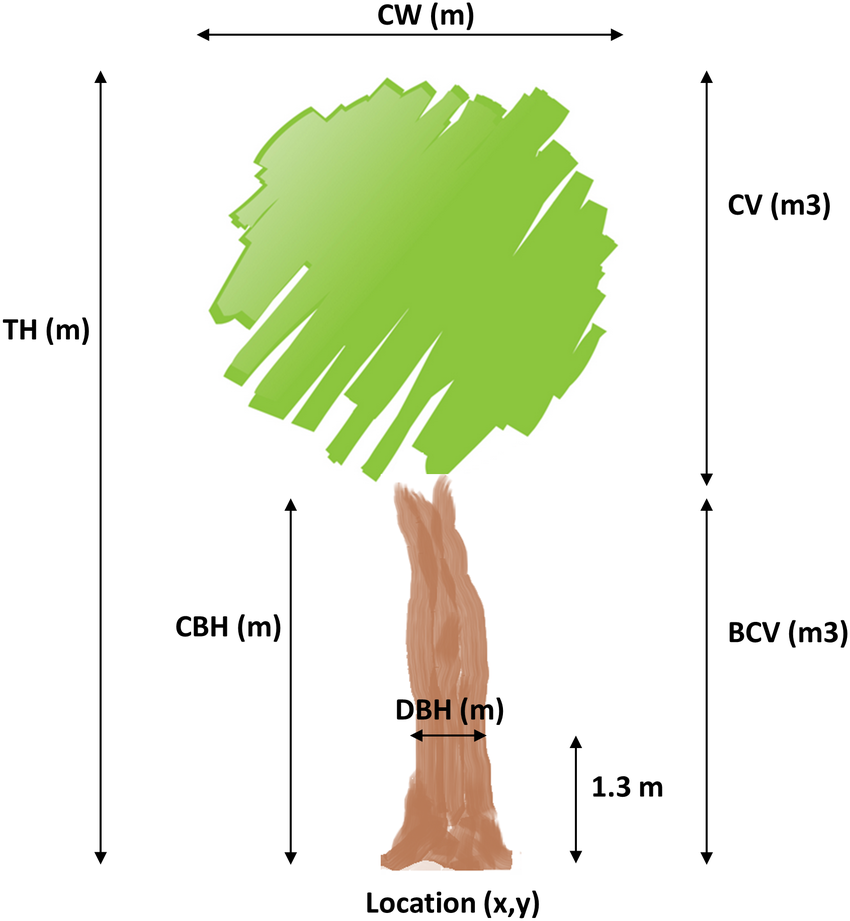
The most widely used factor is the tree’s diameter, measured at 4.5 feet above ground, a standard known as Diameter at Breast Height (DBH).
If a tree is over 8 inches DBH, some towns require you to submit a permit application.
At 12 inches DBH, almost all suburban and urban townships will regulate removal.
Trees over 16 inches DBH are often considered significant or heritage trees, especially if they’re oaks, maples, or native hardwoods.
Why it matters: Larger trees contribute more to stormwater absorption, shade, and wildlife habitat. They’re often protected under canopy preservation rules in townships like Bridgewater, Montclair, and Princeton.
2. Tree Species
Not all trees are treated equally. Many NJ towns maintain a list of protected or native species, which can’t be removed without special approval, even if they’re small.
Examples of commonly protected species in NJ:
White Oak (Quercus alba)
American Beech (Fagus grandifolia)
Sugar Maple (Acer saccharum)
Tulip Tree (Liriodendron tulipifera)
Meanwhile, some invasive species like the Tree of Heaven (Ailanthus altissima) or Norway Maple may be exempt from permits and even encouraged for removal.
Tip: Check with your town’s Environmental Commission or Shade Tree Committee. Princeton, for example, posts its protected species list online.
3. Health Status of the Tree
If a tree is dead, dying, or posing a safety risk, you may not need a permit—but most towns still want documentation.
Typical exemptions:
Trees infected with Emerald Ash Borer (very common in NJ)
Trees split, leaning, or uprooted after storms
Trees showing advanced decay or disease
What’s usually required:
A Certified Arborist Report
Photos of the tree’s condition
In some cases, a town inspection or site visit
Failing to prove that a tree was dead before removal could still result in penalties—even if you meant no harm.
4. Tree Location
Where your tree is located plays a major role in whether a permit is required. Sensitive or regulated zones include:
Wetlands and Riparian Buffers
Cutting a tree within 50–150 feet of a stream, river, or wetland may require DEP review.Stormwater Management Zones
Trees located near storm drains, retention basins, or flood zones are often part of a larger stormwater mitigation plan.Public Rights-of-Way
Trees growing near streets, sidewalks, or utility corridors—even if planted by the homeowner—may legally be public property.Property Lines
Disputes over shared trees on boundaries often require township or court intervention. Cutting a neighbor’s tree, even accidentally, can result in lawsuits.
5. Volume of Tree Removal
Even if each individual tree is small or unregulated, removing multiple trees at once is likely to trigger a review.
Most towns have thresholds like:
More than 2–3 trees/year: Permit likely required
Clearing over 500–1,000 sq. ft. of canopy: Special approval needed
Construction projects: Often require full Tree Protection Plans
Some townships may also require you to:
Submit a Tree Replacement Plan
Pay into a tree mitigation fund
Agree to replant trees on your property
This is especially common in developing subdivisions, large-scale landscaping, or land clearing jobs.
6. Zoning and Land Use Designations
Your zoning category can drastically affect the rules. Even the same town may apply different tree removal standards to:
Residential vs. Commercial
Historic districts
Planned development zones
Environmentally sensitive areas (ESA)
Example: In Clinton Township, commercial properties must submit tree preservation plans with any building permit. In Bernardsville, wooded lots are subject to stricter deforestation rules if zoned as “Rural Residential.”
Always cross-check your tree removal project with your town’s zoning map and Master Plan.
NJ Town Examples: Local Ordinance Variations
Tree removal laws in New Jersey vary widely depending on where you live. Each municipality has its own tree ordinance, and the details—like tree size, species, location, and zoning—can change from town to town. That’s why it’s essential to understand your local regulations before starting any tree work.
Below are detailed examples from towns in Warren, Hunterdon, Somerset, and Mercer Counties, where Midstate Tree often works. These represent the diversity of rules you’ll face across NJ.
Washington Township, NJ (Warren County)
Washington, Nj, where Midstate Tree is based, doesn’t make its full tree protection ordinance easily available online. However, based on local experience and zoning consultations, here’s what homeowners should know:
Tree removal permits may be required for:
Trees near public roads, sidewalks, or utility easements
Trees in historic districts or environmentally sensitive areas
Zoning officers often determine if removal is allowed
Enforcement is stricter for land clearing, such as for sheds, additions, or driveways
Dead or hazardous trees are generally exempt, but documentation (photos or an arborist’s note) is strongly recommended
Local Tip: Always call the Washington Township Building Department before removing a tree, even on private property. Requirements may vary by neighborhood or project type.
Clinton Township, NJ (Hunterdon County)
Clinton Township has one of the most well-defined tree ordinances in Hunterdon County, aimed at preserving woodland character and controlling sprawl.
A permit is required to remove any tree over 8 inches DBH
Special regulations apply to:
Land disturbances over 5,000 sq ft
Lots in the Highlands Protection Area
Scenic corridor overlays
Tree Replacement Requirements:
You may need to replant 1–2 trees for every tree removed
Replacement trees must be native species
Emergency removals still require after-the-fact notification
Reference: Clinton Township Ordinances
Bridgewater Township, NJ (Somerset County)
Bridgewater’s ordinance is particularly strict due to rapid residential and commercial development over the past two decades.
Permit required for any tree over 10 inches DBH
Tree removal for construction, pools, or additions often needs a Tree Protection Plan
Tree permits are reviewed by the Shade Tree Committee or Township Engineer
Expect to:
Submit a site plan
Pay tree removal fees
Replace trees based on a DBH-based formula
Protected species and heritage trees (often over 24″ DBH) require special review
Pro Tip: Even if your tree is unhealthy, you’ll need an ISA Certified Arborist Report to waive the permit.
Princeton, NJ (Mercer County)
Princeton has one of the most progressive urban forestry programs in New Jersey, with robust protections for trees on both public and private land.
Permit required for any healthy tree over 8 inches DBH
Even private homeowners must follow the Princeton Tree Protection Ordinance
Trees in Princeton are categorized as:
Street Trees (public right-of-way)
Significant Trees (typically 24″ DBH+)
Landmark Trees (historically or ecologically valuable)
Permits may be denied if:
The tree is part of a wildlife corridor
Removal reduces neighborhood tree canopy
You’ll need to submit:
Tree Removal Application
Certified Tree Protection Plan (if part of a building project)
Payment into Princeton’s Tree Fund, if replanting isn’t feasible
Official Site: Princeton Environmental Commission
BONUS: Flemington Borough, NJ
Trees on historic properties require special approval under the Historic Preservation Commission
Permit needed if removing more than 3 trees per year
Any removal near stormwater management systems or flood zones may involve both DEP and Borough Engineer
How to Get a Tree Removal Permit in NJ (Step-by-Step)
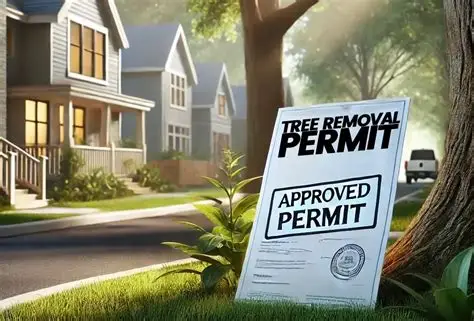
Getting a tree removal permit in New Jersey might sound overwhelming at first—but it doesn’t have to be. Most towns follow a fairly similar process, even though the exact forms and fees vary. Below is a detailed guide to help you through it, whether you’re a homeowner in Washington, NJ, or building a new home in Bridgewater.
Step 1: Check If a Permit Is Required
Before doing anything else, contact your municipal zoning or engineering department. You can usually:
Call your Town Hall
Visit your township’s website and search for “tree removal permit” or “tree ordinance”
Email the Township Clerk or Code Enforcement Officer
Some towns have an online portal for permit requests, while others require you to submit forms in person or by mail.
🛑 Warning: Don’t rely on word-of-mouth. Just because your neighbor didn’t need a permit doesn’t mean you won’t. Each town (and sometimes even each zoning district) has different rules.
Step 2: Fill Out a Tree Removal Permit Application
Once you confirm a permit is needed, download the Tree Removal Permit Application from your town’s official website or pick one up at the municipal building.
Typical application forms ask for:
Your name and address
Property block and lot number
Number and type of trees you want to remove
Reason for removal (e.g., tree is dead, diseased, damaging the foundation, part of a construction project)
Whether you’re offering to replant trees or pay into a mitigation fund (some towns require this)
Pro Tip: If the tree is near power lines, flood zones, or roads, include that in your application. Some towns coordinate with utility companies or stormwater departments.
Step 3: Provide a Site Plan or Property Sketch
Most towns require a simple site plan or sketch of your property. This doesn’t have to be a professional survey, unless you’re doing major land work.
Just draw or print a map showing:
Your house, driveway, fences, and nearby structures
The exact location of each tree to be removed
Neighboring property lines, roads, and sidewalks
Labels for any protected zones (like wetlands, flood buffers, or right-of-ways)
A hand-drawn sketch is usually fine, but make it clear and to scale. Townships use this to determine if the tree is within a regulated zone.
Step 4: Submit an Arborist Report (If Needed)
If your reason for removal is that the tree is dead, diseased, or dangerous, many towns will require an official letter or report from a certified arborist.
The report should include:
The species of the tree
Its condition (e.g., rotting trunk, pest infestation, storm damage)
Photos (optional but helpful)
Signature and license number of a NJ-certified tree expert
You can request this report as part of a visit from a professional tree service like Midstate Tree, which is licensed (NJTC#939369) and operates throughout Warren and Hunterdon Counties.
In towns like Princeton and Bridgewater, arborist letters are mandatory for exemptions from permit rules.
Step 5: Pay the Application Fee
Permit fees vary by township. Some towns charge a flat fee, while others calculate costs based on:
The number of trees
The diameter (DBH) of each tree
Whether it’s part of a construction site
Typical costs range:
$0 to $25 per tree in small towns (e.g., Washington Twp.)
$50–$150 for larger or commercial jobs (e.g., Bridgewater, Princeton)
Additional fees may apply if replanting is waived
You may also be asked to submit a tree bond or escrow, especially in new developments or if the project disturbs large areas of land.
Step 6: Wait for the Review and Approval
Once submitted, your application goes through a review process. This may involve:
A site visit from the Zoning Officer or Municipal Arborist
Review by the Shade Tree Commission or Planning Board
Final sign-off from the Township Engineer or Construction Official
Processing times vary:
Minor tree removals: 1 to 3 business days
Construction-related permits: 1 to 2 weeks
Emergency removals: Often fast-tracked or reviewed after the fact
You’ll receive an approval (or denial) by mail or email. If denied, the town may offer alternatives—like trimming instead of full removal, or requiring replanting.
Let a Licensed Tree Expert Handle It for You
The truth is, many homeowners don’t want to deal with this paperwork—and you don’t have to. Most licensed tree services, including Midstate Tree, can manage the entire permit process for you:
Determine if a permit is needed
Gather required documentation
Communicate with your local township
Submit applications and drawings
Provide the arborist report
Schedule safe, legal removal once approved
Having a tree contractor who understands local ordinances can save you time, hassle, and potential fines. We’ve helped homeowners in towns like Clinton, White Township, and Raritan avoid legal headaches by navigating permits the right way.
Who Can Help? Hire a Local Tree Expert
Permits can be confusing. One wrong move and you’re facing a fine or a replanting order. That’s why it’s smart to work with a licensed New Jersey tree expert.
Midstate Tree, located in Washington, NJ, serves homeowners across Warren and Hunterdon counties. We’re fully licensed (NJTC#939369) and handle everything from pruning to storm cleanups and—yes—permit applications.
Our crew knows the local ordinances. We can tell you upfront if your project needs a permit or not. And we’re available 24/7, which matters when a dangerous tree needs fast action.
What Happens If You Remove a Tree Without a Permit?
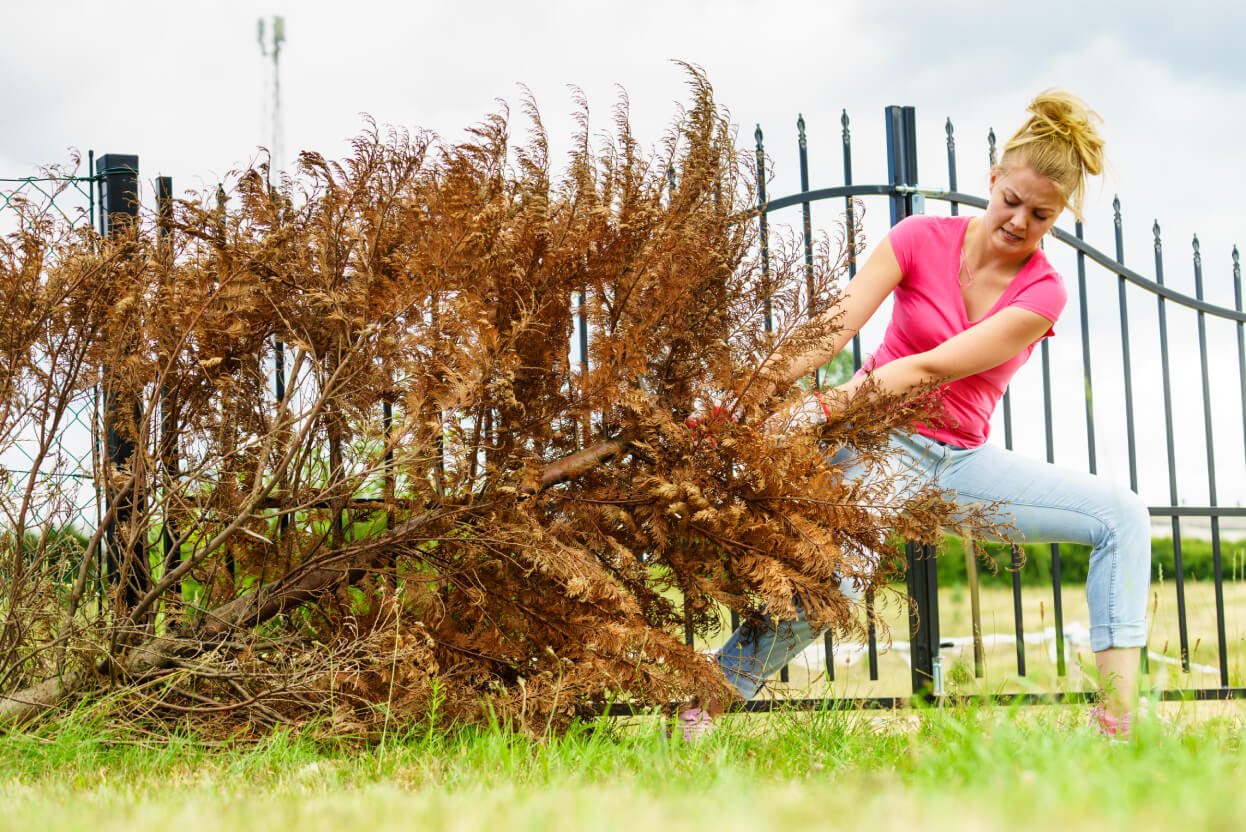
Here’s the truth: cutting down a tree without a permit in NJ can be expensive.
You could face:
Fines up to $2,000 or more per tree
Stop work orders from the town
Forced replanting of native species
Legal disputes with HOAs or neighbors
One homeowner in Somerset County was ordered to plant 25 new trees after removing five healthy oaks without approval. Don’t be that person.
FAQs: Quick Answers for Homeowners
Can I remove a dead tree without a permit?
Usually yes—but get a certified arborist’s report for proof.
Do I need a permit for a tree damaging my home?
Probably not, but take pictures and call your town or an expert first.
What if I live in an HOA?
HOAs can have stricter rules than towns. Check both.
Can I remove a tree myself?
If it’s small and safe—sure. But bigger jobs should go to pros. Safety first.
Need Help? Contact Midstate Tree for Guidance
Permits, paperwork, local rules—it’s a lot. If you’re not sure where to start, we can help.
📍 Serving Washington, NJ, and surrounding areas
📞 Call 908-283-5755 or Request a Free Quote
🌲 Licensed, insured, and local experts
Whether it’s one tree or ten, Midstate Tree makes sure your job is done safely—and legally.


